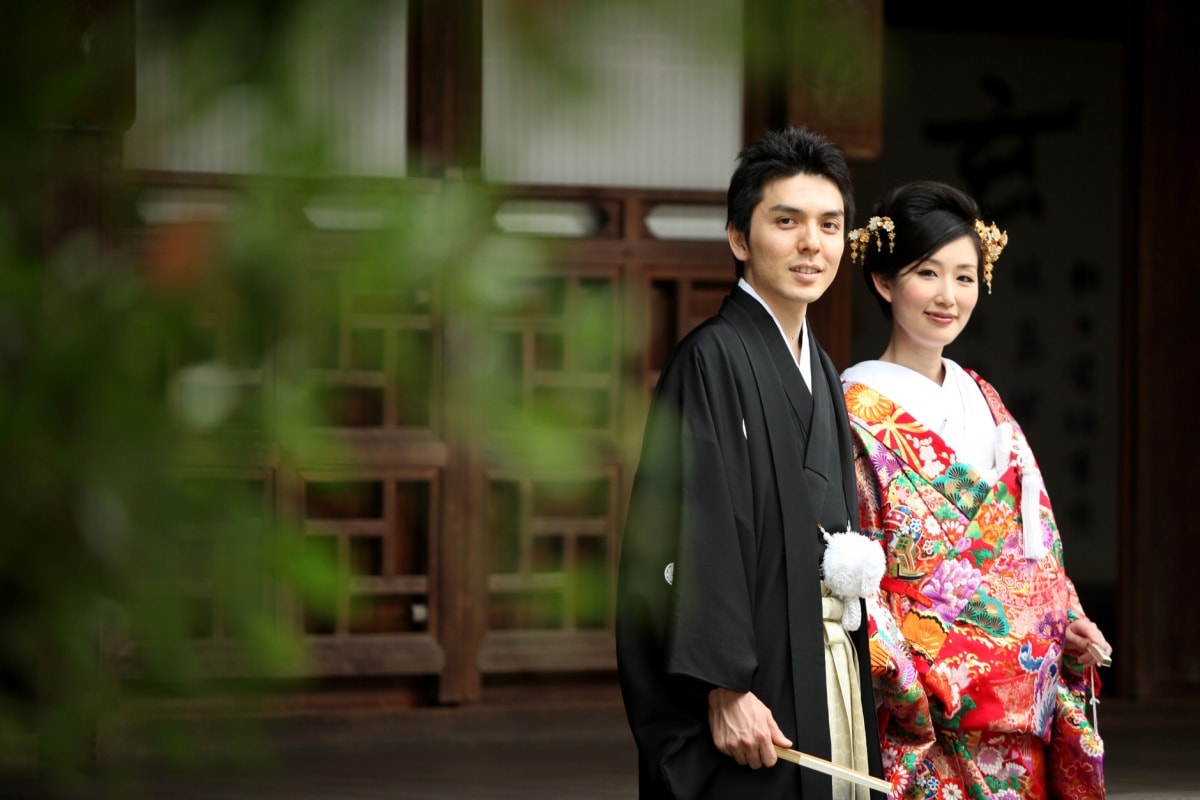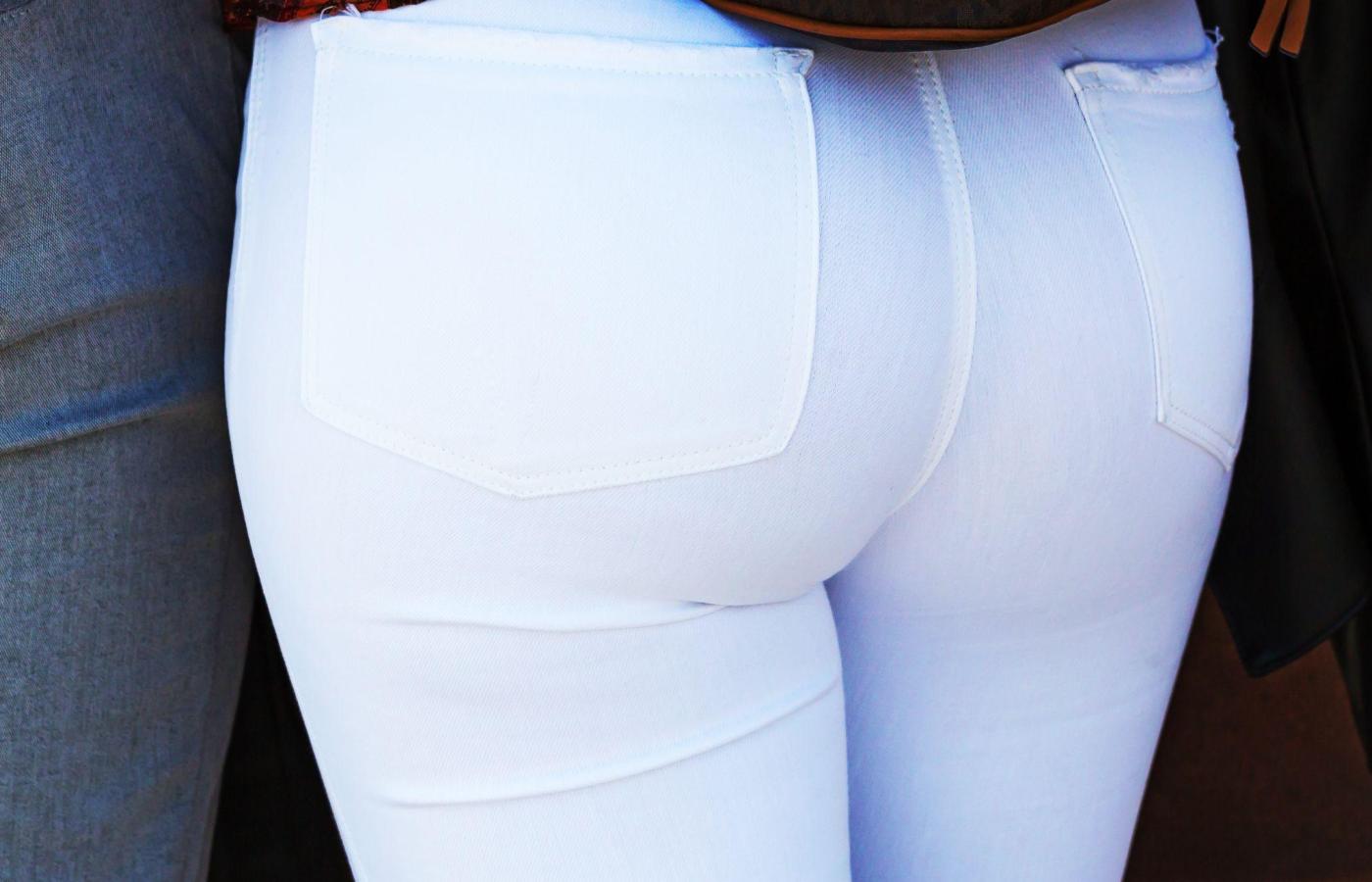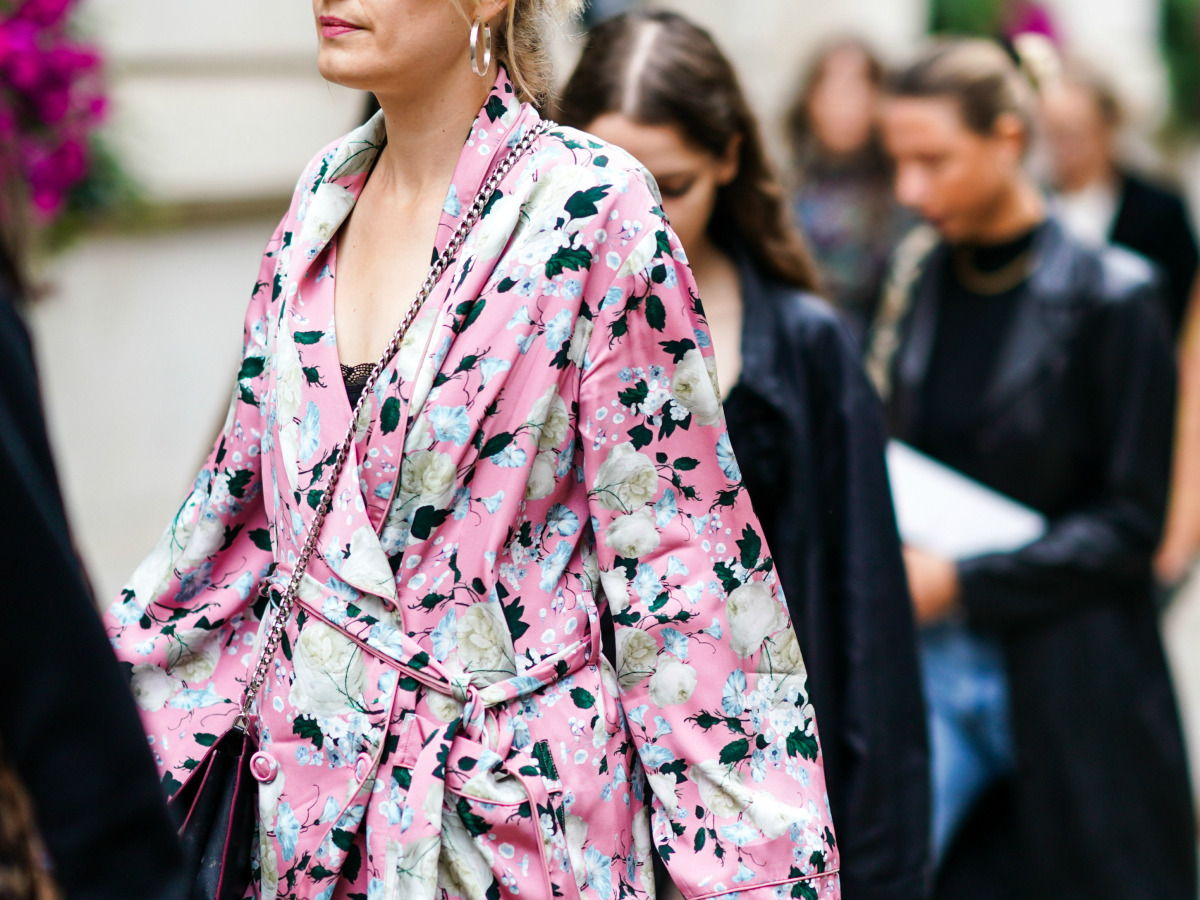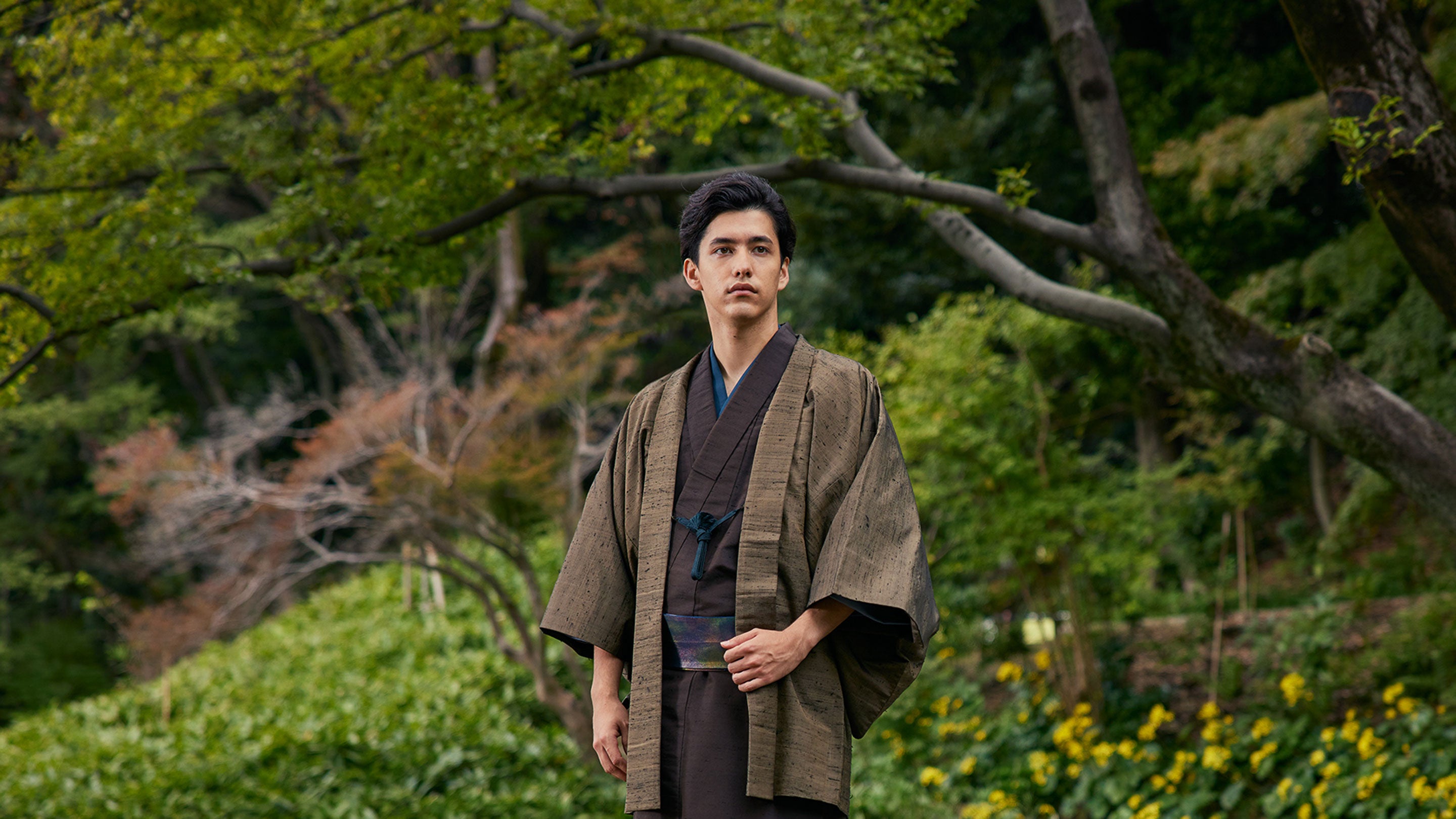

FAQs
When Do You Wear A Kimono
Modified: September 23, 2023
Do you have general questions about when to wear a kimono? Find out everything you need to know about kimono etiquette and occasions for wearing this traditional Japanese garment.
(Many of the links in this article redirect to a specific reviewed product. Your purchase of these products through affiliate links helps to generate commission for Under-tec.com, at no extra cost. Learn more)
Table of Contents
Introduction
The kimono is an iconic symbol of Japan’s rich cultural heritage. It is a traditional garment that has been worn by both men and women for centuries. The beauty and elegance of the kimono have captivated people around the world, and it is now recognized as a significant aspect of Japanese culture.
While the kimono is deeply rooted in tradition, it has also evolved over time to adapt to modern fashion sensibilities. Today, wearing a kimono is not limited to formal occasions but can be seen in various settings, from festivals and weddings to casual outings and even as a fashion statement.
In this article, we will explore the fascinating world of the kimono. We will delve into its history, traditional occasions for wearing a kimono, and how it has been adapted to modern times. We will also provide insights on how to choose the right kimono, how to wear it properly, and the essential accessories that complement the ensemble. Lastly, we will discuss the importance of taking care of your kimono to ensure its longevity.
Whether you are a history enthusiast, a lover of fashion, or simply curious about different cultures, this article will give you a comprehensive understanding of the kimono and when it’s appropriate to wear it. So, let’s embark on this journey and explore the timeless beauty of the kimono!
History of the Kimono
The history of the kimono can be traced back over a thousand years in Japanese culture. The word “kimono” means “thing to wear” in Japanese, and it refers to a full-length robe with wide sleeves, a wraparound style, and a distinct T-shape silhouette.
The earliest form of the kimono can be traced back to the Heian period (794-1185), where it was influenced by Chinese clothing styles. During this time, the kimono was primarily worn by the aristocrats and members of the nobility. It was a symbol of their social status and a reflection of their refined aesthetic sensibilities.
As the centuries passed, different regions in Japan developed their own unique styles of the kimono. For example, the Nara period (710-794) saw the emergence of kosode, a predecessor to the modern kimono. The Edo period (1603-1868) brought forth the popularity of colorful and intricately embroidered kimono designs.
During the Meiji era (1868-1912), Japan underwent a period of westernization, and the traditional kimono started to decline in popularity. Western-style clothing became more prevalent, especially among the urban population. However, the kimono continued to be worn for special occasions, such as weddings, tea ceremonies, and festivals.
In recent decades, there has been a resurgence of interest in kimono fashion, both in Japan and globally. People have come to appreciate the beauty and cultural significance of the kimono, leading to a revival of traditional craftsmanship and innovative designs. Today, the kimono is not only seen as a symbol of Japan’s past but also as a fashion statement that combines elements of tradition with contemporary style.
Throughout its history, the kimono has remained an enduring symbol of Japanese culture and a reflection of the country’s rich artistic heritage. Its timeless elegance and versatility continue to captivate people around the world, making it a cherished piece of clothing that transcends boundaries and generations.
Traditional Occasions for Wearing a Kimono
The kimono is deeply rooted in Japanese culture and has long been associated with various traditional occasions and ceremonies. Here are some of the traditional occasions where wearing a kimono is considered appropriate:
- Coming of Age Ceremony (Seijin-no-Hi): This is a significant milestone for young adults who have reached the age of 20. It is a day of celebration and recognition of their transition into adulthood. Many young women choose to wear a furisode, a type of kimono with long, swinging sleeves, for this occasion, while men wear a hakama, a pleated skirt-like garment.
- Weddings: Kimonos are often worn by brides during traditional Japanese weddings. The style of kimono worn by the bride may vary depending on the region, but it usually features vibrant colors and intricate patterns. The groom typically wears a montsuki, a formal kimono with family crests, along with hakama.
- Tea Ceremony: The tea ceremony, or chanoyu, is a highly ritualistic and meditative practice that focuses on the preparation and serving of matcha tea. Participants often wear kimono to adhere to the formal atmosphere and respect the traditional etiquette associated with this ceremony.
- Festivals: Many traditional Japanese festivals, such as the famous Gion Festival in Kyoto or the Nebuta Festival in Aomori, provide an opportunity for people to wear kimono. Vibrant yukata, a lightweight cotton kimono, are popular choices during these festive occasions.
- New Year’s Day (Shogatsu): The start of the new year is an important time in Japan, and kimono is often worn to celebrate this occasion. People visit shrines, participate in ceremonies, or gather with family and friends while dressed in their finest kimono.
These are just a few examples of the traditional occasions where kimono is commonly worn. However, it is important to note that the frequency of wearing kimono on a day-to-day basis has significantly decreased in modern times. Today, the kimono is more often reserved for special events or those who appreciate its cultural significance.
While these traditional occasions provide an opportunity to wear a kimono, it is essential to respect and understand the cultural context in which they are worn. By doing so, we can fully appreciate the beauty and significance of this iconic Japanese garment.
Modern Adaptations and Occasions for Wearing a Kimono
The kimono has evolved over time and has found its place in modern fashion and various occasions beyond the traditional settings. Here are some modern adaptations and occasions where wearing a kimono is embraced:
- Casual Outings: Kimonos are now worn as a fashionable statement for casual outings. Young women often opt for casual versions of the kimono, such as the komon or the hitoe, which are lighter and more comfortable for everyday wear. They can be paired with jeans or skirts for a stylish, bohemian look.
- Special Anniversaries and Celebrations: Kimonos are still favored attire for significant anniversaries and celebrations, such as milestone birthdays or company events. Men often choose a hakama and haori combination while women can go for various kimono styles that suit the occasion.
- Tourism and Cultural Events: In Japan, you may find rental kimono services catering to tourists who wish to immerse themselves in the local culture. Visitors can rent a kimono and stroll around historical sites, attend traditional festivals, or even participate in tea ceremonies. It’s a fantastic way to experience Japan’s rich cultural heritage while creating lasting memories.
- Art Exhibitions and Galleries: Kimonos are considered works of art themselves. They are often showcased in museums and galleries as examples of exquisite craftsmanship and artistic expression. Attending such exhibitions provides an opportunity to appreciate the beauty and skill behind the creation of these garments.
- Kimono Fashion Shows and Events: Fashion designers who draw inspiration from traditional Japanese clothing often incorporate kimono elements into their creations. Kimono-inspired fashion shows and events attract fashion enthusiasts and those who appreciate the fusion of traditional and contemporary aesthetics.
These modern adaptations and occasions for wearing a kimono reflect the versatility of this garment and its ability to transcend cultural boundaries. The kimono has become a symbol of Japanese fashion and art, embodying a blend of tradition and modernity.
However, it’s important to approach the wearing of kimono with cultural sensitivity and respect. Understanding the historical and cultural significance attached to the garment will enable us to appreciate it in its proper context while embracing its evolving presence in modern times.
How to Choose the Right Kimono
Choosing the right kimono involves considering various factors such as the occasion, body type, personal style, and budget. Here are some tips to help you select the perfect kimono:
- Occasion: Determine the purpose and setting for wearing a kimono. Traditional events may require a more formal and elaborate kimono, while casual outings call for lighter and more relaxed styles.
- Body Type: Consider your body type when choosing a kimono. Different styles and patterns can create different visual effects. To add height, opt for longer kimono styles with vertical patterns. V-neck or wrap-around styles can flatter a curvier figure.
- Color and Pattern: Choose colors and patterns based on personal preference and the occasion. Traditional kimono often feature vibrant colors and intricate patterns, while modern adaptations allow for a wider range of colors and even unconventional designs.
- Fabric: Select a fabric that suits the season and comfort level. Silk is considered the most luxurious and suitable for formal occasions, while cotton or synthetic materials are more practical for everyday wear.
- Accessories: Consider the accessories that will complement your kimono. Obi belts, tabi socks, and geta sandals are common accessories for completing the kimono ensemble. Coordinate these items with the colors and patterns of the kimono.
- Authenticity: If you are looking for an authentic kimono, consider purchasing from reputable sellers or visiting vintage stores. These garments often come with a rich history and craftsmanship. However, if you prefer a modern twist, there are also contemporary kimono-inspired designs available from fashion designers.
- Budget: Set a budget and consider the cost of the kimono. Authentic, handmade kimono can be quite expensive due to the skill and artistry involved in their production. However, there are more affordable options available, such as renting a kimono or purchasing second-hand garments.
Ultimately, choosing the right kimono is a personal expression of style and taste. Whether you opt for a traditional or modern kimono, the key is to find a garment that makes you feel comfortable, confident, and celebrates the beauty of Japanese culture.
How to Wear a Kimono
Wearing a kimono is an art form in itself, and proper technique is essential to showcase the garment’s beauty. Here are the steps to wearing a kimono:
- Undergarments: Start by wearing a juban, a lightweight robe, as a base layer. The juban helps to keep the kimono clean and provides a smooth surface for the kimono to drape over.
- Kimono Layers: Place the kimono on a flat surface and position the collar in line with your neck. Hold the kimono from the shoulders and lower it onto your body. Make sure the left side overlaps the right, as traditionally, the opposite is reserved for dressing deceased individuals.
- Length Adjustment: Adjust the length of the kimono by lifting the excess fabric at the hem and folding it up to your desired height. Secure the fold with a koshihimo, a wide belt used to cinch the kimono at the waist.
- Collar Alignment: Adjust the collar so that it sits straight and evenly around the neck. The collar should create a subtle V-shape in the front and back, with a small portion of the juban collar visible at the top.
- Obi Belt: Wrap the obi belt tightly around the waist, covering the koshihimo. Fold the obi ends neatly and secure with decorative knots or obijime, a cord that holds the obi in place.
- Finishing Touches: Adjust the sleeves and kimono fabric to create elegant lines. Tuck in any loose fabric underneath the obi belt and smooth out any wrinkles or folds.
- Accessories: Complete the look by adding accessories such as tabi socks, which are traditional split-toe socks, and geta sandals. These items not only enhance the overall aesthetic but also provide practicality and comfort.
Wearing a kimono might seem daunting at first, but with practice and guidance, it becomes an enjoyable and rewarding experience. Attending a kimono dressing workshop or seeking assistance from someone experienced can help you master the proper techniques.
Remember, wearing a kimono is a form of art, and each step contributes to the overall presentation of the garment. Take the time to appreciate the beauty of the kimono and the cultural significance it carries.
Kimono Accessories
Accessorizing a kimono is just as important as wearing the garment itself. The right accessories can elevate the overall look and enhance the beauty of the kimono. Here are some essential kimono accessories:
- Obi Belt: The obi is a wide belt that cinches the kimono at the waist and adds structure to the garment. There are various types of obi belts, including the wide and decorative obi worn for formal occasions, and the casual and narrower obi worn for everyday wear.
- Obijime: The obijime is a decorative cord that is used to tie the obi belt and adds a pop of color and texture to the overall ensemble. It can be made of silk, rayon, or other materials and is available in different patterns and styles.
- Obiage: The obiage is a small, square scarf that is tied and secured around the collar of the kimono. It adds a touch of elegance and can be a contrasting or coordinating color to the kimono and obi belt. It is usually made of silk or synthetic materials.
- Tabi Socks: Tabi socks are traditional split-toe socks that are designed to be worn with geta sandals. They not only provide comfort and protection for the feet but also add a traditional touch to the overall kimono ensemble.
- Geta Sandals: Geta sandals are traditional wooden sandals with elevated platforms. They are often worn with kimono to raise the wearer slightly off the ground and protect the kimono from dragging. Geta sandals come in various styles, from casual to formal, and are made from different types of wood.
- Kanzashi: Kanzashi are decorative hair ornaments that are traditionally worn with a kimono. They come in various shapes and designs, such as flowers, fans, or combs, and are often made from materials like silk, metal, or plastic. Kanzashi add a beautiful finishing touch to the hairstyle and complement the overall kimono look.
Choosing the right accessories is an opportunity to express your personal style and enhance the beauty of the kimono. Consider the occasion, color palette, and overall aesthetic of the kimono when selecting accessories. Remember, the accessories should complement the kimono and create a harmonious and balanced look.
By paying attention to the details and carefully selecting the appropriate accessories, you can elevate your kimono ensemble and showcase the full beauty of this iconic Japanese garment.
Taking Care of Your Kimono
To ensure the longevity of your kimono and preserve its beauty, proper care is essential. Here are some tips on how to take care of your kimono:
- Storage: When not wearing your kimono, store it in a cool, dry place away from direct sunlight and moisture. Use a breathable garment bag or wrap it in acid-free tissue paper to protect it from dust, insects, and discoloration.
- Cleaning: Spot clean any stains immediately with a soft cloth or sponge. If a thorough cleaning is needed, it is best to take your kimono to a professional dry cleaner who specializes in handling delicate fabrics. Avoid washing your kimono at home, as improper techniques can damage the fabric and decorations.
- Handling: Handle your kimono with clean hands to prevent any oil or dirt transfer. If you need to touch the fabric, do so gently and avoid pulling or tugging on the delicate threads, especially around the collar and sleeves.
- Ironing: If your kimono becomes wrinkled, use a steamer or iron set to a low heat setting. Place a clean cloth or pressing cloth between the iron and the kimono to protect the fabric. Avoid using too much pressure, as excessive heat and pressure can damage the delicate fabric and decorations.
- Proper Folding: When folding your kimono, follow the original creases to maintain its shape. It is recommended to refold your kimono occasionally to prevent deep creases from forming in one area.
- Preserving Decorative Elements: If your kimono has decorative elements such as embroidery or beading, handle them with care to avoid snagging or breakage. Avoid exposing these delicate areas to excessive friction or contact with sharp objects.
- Inspections: Regularly inspect your kimono for any signs of damage or wear. Look for loose stitching, weak seams, or moth holes. Address any issues promptly to prevent further damage and extend the lifespan of your kimono.
Remember, each kimono is a unique and precious piece of artistry and craftsmanship. By providing proper care and maintenance, you can enjoy your kimono for years to come and pass it down as a cherished heirloom.
Conclusion
The kimono is more than just a piece of clothing; it is a symbol of Japan’s rich cultural heritage and artistic craftsmanship. From its historical roots to its modern adaptations, the kimono has captivated people around the world with its elegance and beauty.
Whether worn for traditional occasions or as a fashion statement, the kimono represents a harmonious blend of tradition and modernity. Its versatility allows it to be worn in various settings, from formal ceremonies to casual outings.
Choosing the right kimono involves considering factors such as the occasion, body type, personal style, and budget. Accessorizing with items like obi belts, obijime, and kanzashi adds depth and enhances the overall ensemble.
To ensure the longevity of your kimono, proper care is crucial. Storing it correctly, cleaning and handling with care, and addressing any issues promptly will help preserve its beauty and structural integrity.
Overall, the kimono is a timeless garment that embodies the essence of Japanese culture and serves as a beautiful expression of art and tradition. Embrace the opportunity to wear a kimono with reverence and appreciation, and allow yourself to become immersed in the elegance and significance that it represents.










